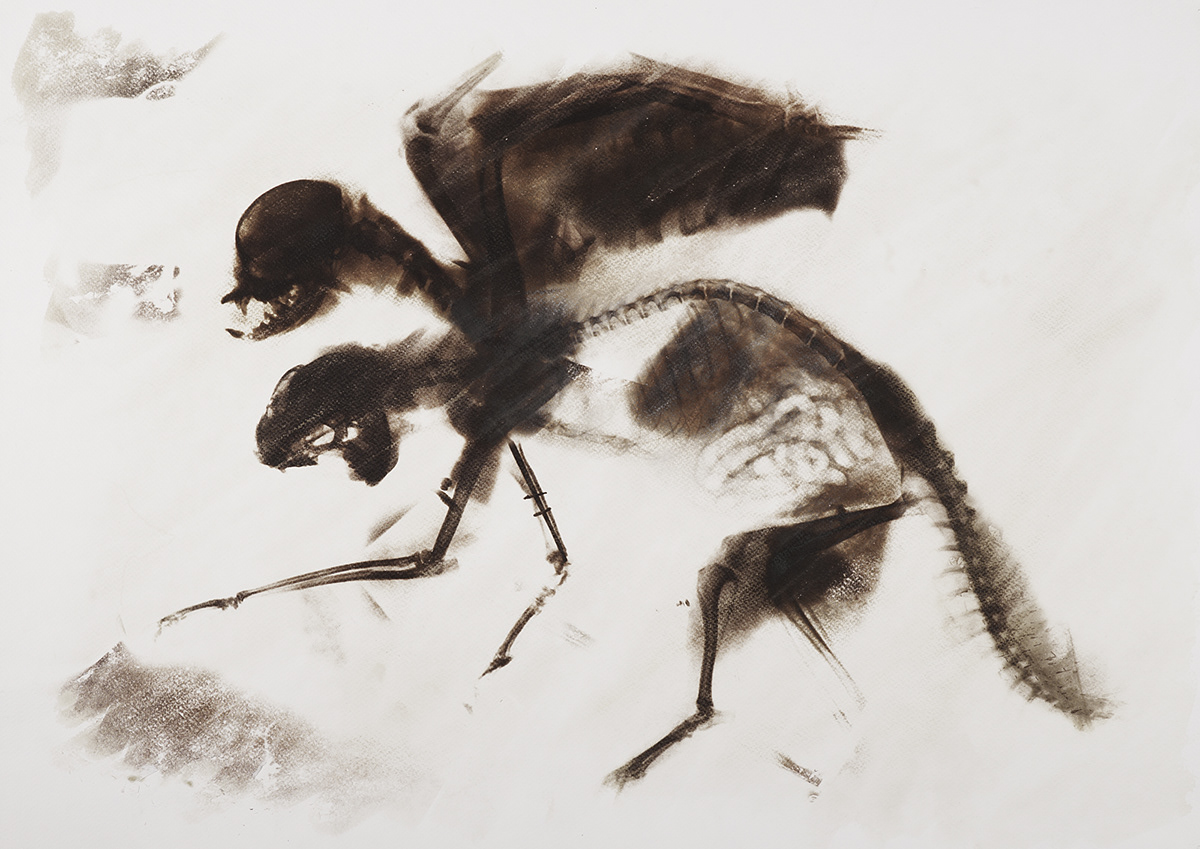
Although at a first glimpse one might think differently, this creature is an insect. The tubular structure is not a bone structure, but parts of the athropod legs. Based on its size, it is evident that this animal lived in the carbon age, about 340 million years ago, when insects grew to gigantic sizes due to the high oxygen level of the atmosphere.
Its habits make it similar to the common earwig: during the day it was hiding in cavities or under pieces of wood, and it was active and looking for food at night. There is
another feature which makes one associate it with these insects: the long, bended fork-like extension of its body which might have been used for mating, or to scare away rivals.
Its habits make it similar to the common earwig: during the day it was hiding in cavities or under pieces of wood, and it was active and looking for food at night. There is
another feature which makes one associate it with these insects: the long, bended fork-like extension of its body which might have been used for mating, or to scare away rivals.

This might have been an approximately 2-3-meter-long creature living in the sea, with rudimentary lower limbs. Its skeleton and the strong muscles indicate that it was swimming sideways with a snake-like motion. Although this style of motion seems underdeveloped, the size of the skull infers a well-developed
brain, which gives evidence of high intelligence. This animal must have lived in groups like dolphins do today, and had similar social and communication skills.
brain, which gives evidence of high intelligence. This animal must have lived in groups like dolphins do today, and had similar social and communication skills.

This furry, cylinder-like animal lived on the grass-covered prairie. In spite of the fact that its lower limbs were not strong enough to walk on, they enabled it to stand up high on its two legs, leaning on its tail. This way, it could look around, above the high grass, spotting any predators it was endangered by,
while the others could look for food unbothered. These insectivorous animals lived in groups and families, occupying abandoned underground cavities and nests.
while the others could look for food unbothered. These insectivorous animals lived in groups and families, occupying abandoned underground cavities and nests.

This creature bears all the features of a bat-like animal: wings, strong jaw and canine-teeth, as well as the small, round head and long fingers on its front feet. The presence of the second head and neck is quite bizarre, and allows one to believe that what we see here are the remains of Siamese twins. However, interestingly enough, in this case this deadly malformation became a characteristic of this species. The colourful wings were not strong enough to enable it to fly, but presumably they were used to look bigger and more frightening, this way scaring other animals away.
